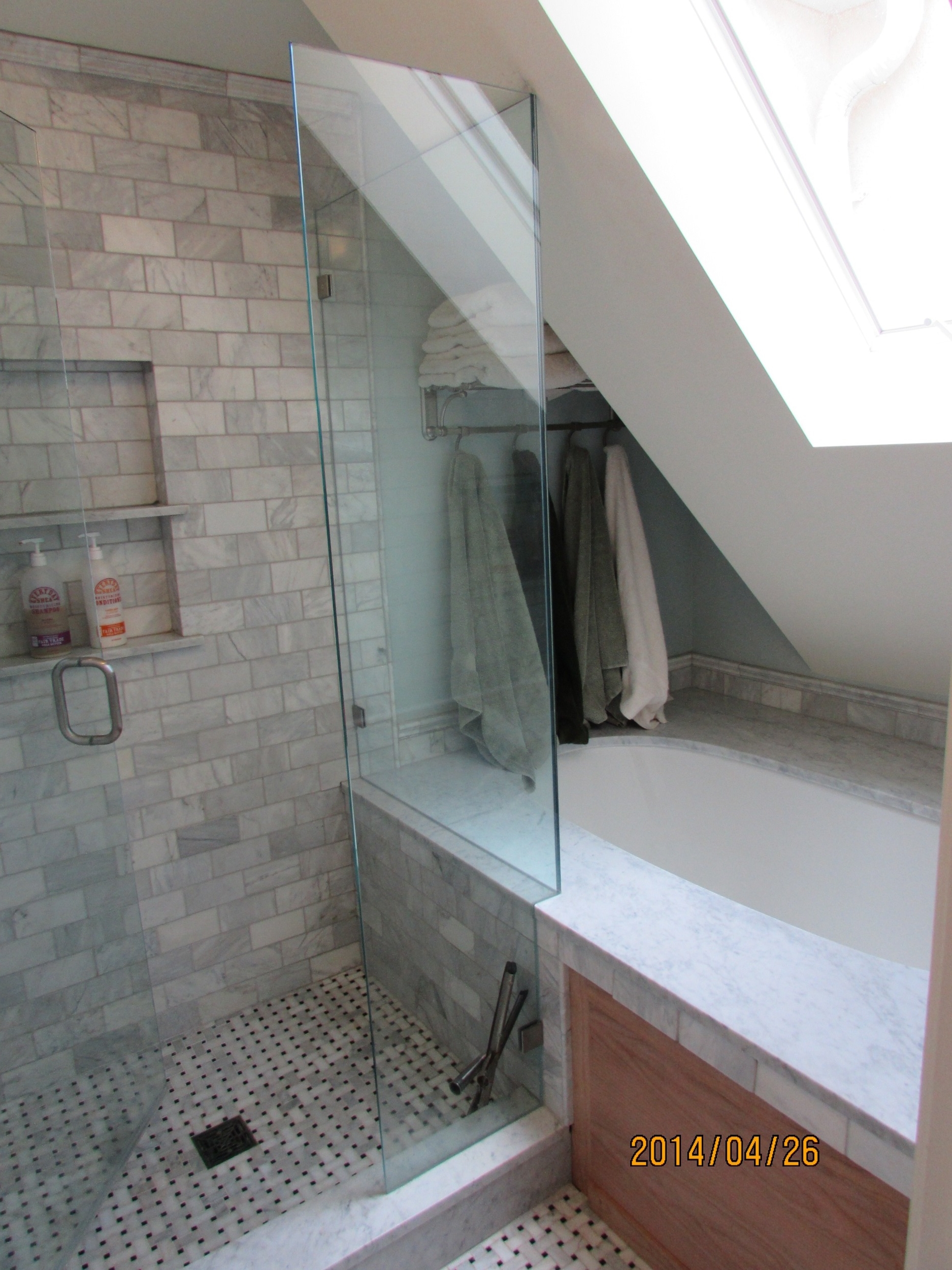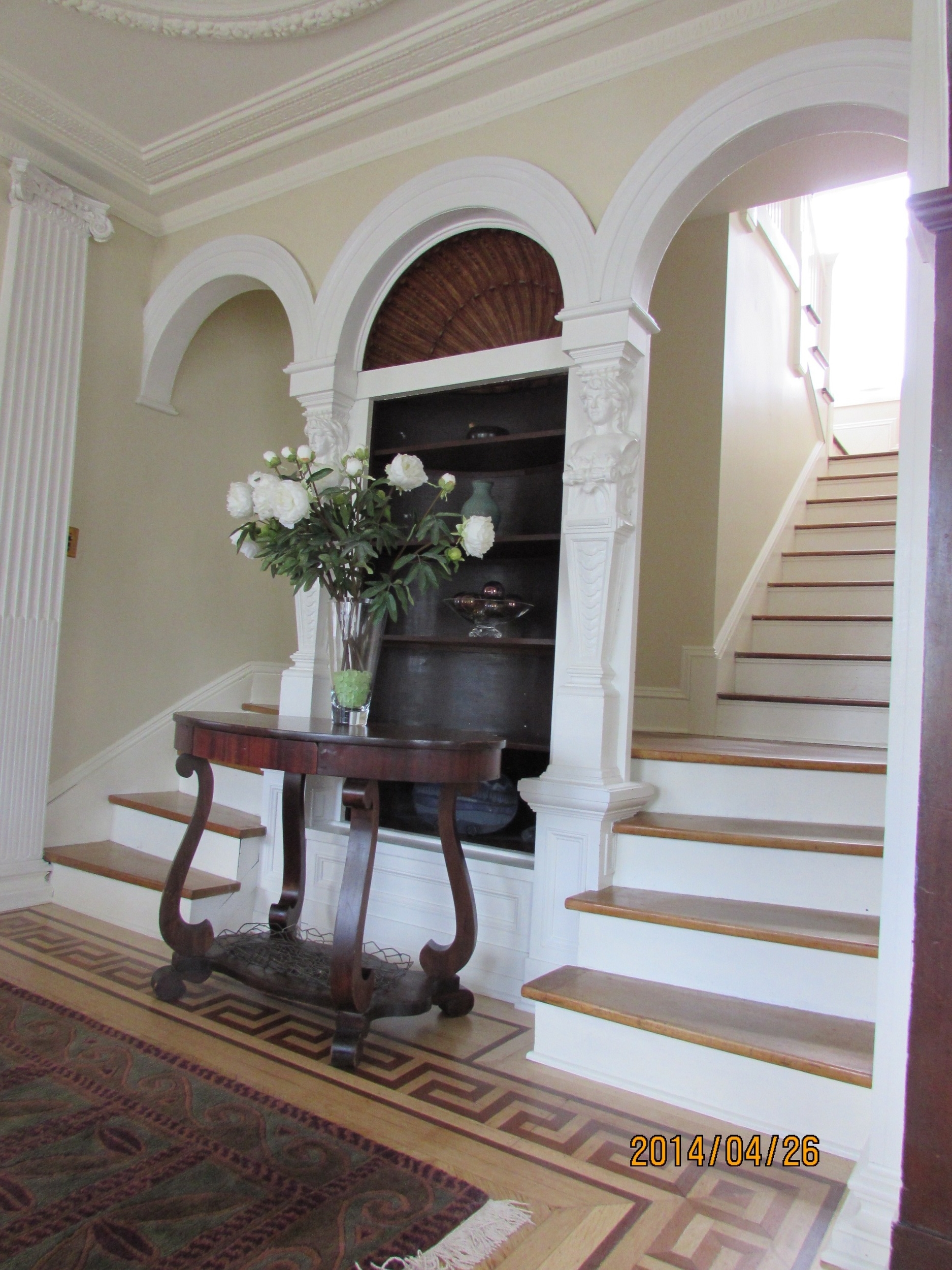Specs
Location: Seattle
Number of bedrooms: 4
Number of baths: 3
Square footage: 3,115
Year completed: 2013
Architect: VELOCIPEDE architects inc
Description
“I learned to let workers walk around to gape at the ornate details during their first visit before trying to engage them with any business.”
This 1904 home was built by partners of the Pantages Theaters. Oak floors with marquetry borders, ornate plaster ceilings, beveled glass windows, molded trim, and carved figureheads create an elegant home. Unfortunately a multiyear leak had ruined a corner of the dining room, so specialists were found to match the original decorative plaster and basket weave inlaid flooring. Workers painstakingly set 10,000 finish nails into the flooring.
“We want to retrofit to Passivhaus standards.”
We undertook a thorough sealing of the old walls and attic, insulated the basement with polyiso, and blew piles of cellulose in the attic. Windows on the second floor and basement were replaced with triple-glazed units, while the elegant first floor windows were refurbished and fitted with interior storms. Barred from removing the interior plaster or exterior stucco, we insulated the first floor walls from above. Analysis of dollars per BTU saved guided our decision to not remove the stucco to outsulate with mineral wool. In the end, we cut heat losses by 84% from an EUI of 121 to just 19, and received Built Green 4-Star certification.
“We’d like to view Mt. Rainier from the master bedroom.”
The entire second floor was demolished back to the studs, except for the elegant central stair hall. The floor plan was completely rearranged to fit three bedrooms plus a study under the existing roof. New waste plumbing pipes were threaded down through the house in two directions to serve the new family bathroom, split into a bathing chamber and a toilet chamber.
“We love to cook and entertain dinner guests.”
The old servant kitchen, tucked away in the back with its own separate stair, was replaced by a new mud room and bathroom. The old three-foot door from dining to kitchen was widened to an eight-foot archway, carefully replicating the door casing so it appears to be original. The new kitchen has views to the back yard garden, soapstone countertops, custom cherry cabinets, a glass tile splash, energy- and water-efficient appliances, and even a filtered water stub out for the espresso maker.
“I really want four more inches of headroom in the basement.”
We demolished the old slab, excavated without undermining the shallow footings, installed new gravel, insulation, vapor retarder and concrete slab. The northeast basement corner was thermally isolated to become a root cellar that will store food produced by the entire yard’s conversion to permaculture. The basement now houses the guest bed and bath, family room, laundry, and mechanical room.
ENERGY EFFICIENCY, COOL DETAILS, GREAT IDEAS, AND MORE
“We expected lead paint, but I’ve never seen asbestos in plaster before.”
The hazmat crew did all necessary plaster demo. Trim and doors were carefully removed, labeled, and stored for reinstallation. Lead RRP and construction indoor air quality procedures were vigorously followed. When the new HRV and flexible ventilation tubing arrived on site, we set up a clean room where all HVAC materials were stored and cut prior to installation to assure pristine air quality.
“We don’t want to draw our fresh air from down near the ground.”
The old laundry chute, our only existing vertical chase, had been promised three times over for plumbing, wiring, and ducts. So we routed the new fresh air duct from the basement HRV up through the old furnace chimney to the sky, a symbol of clean green replacing dirty fossil fuel.






















